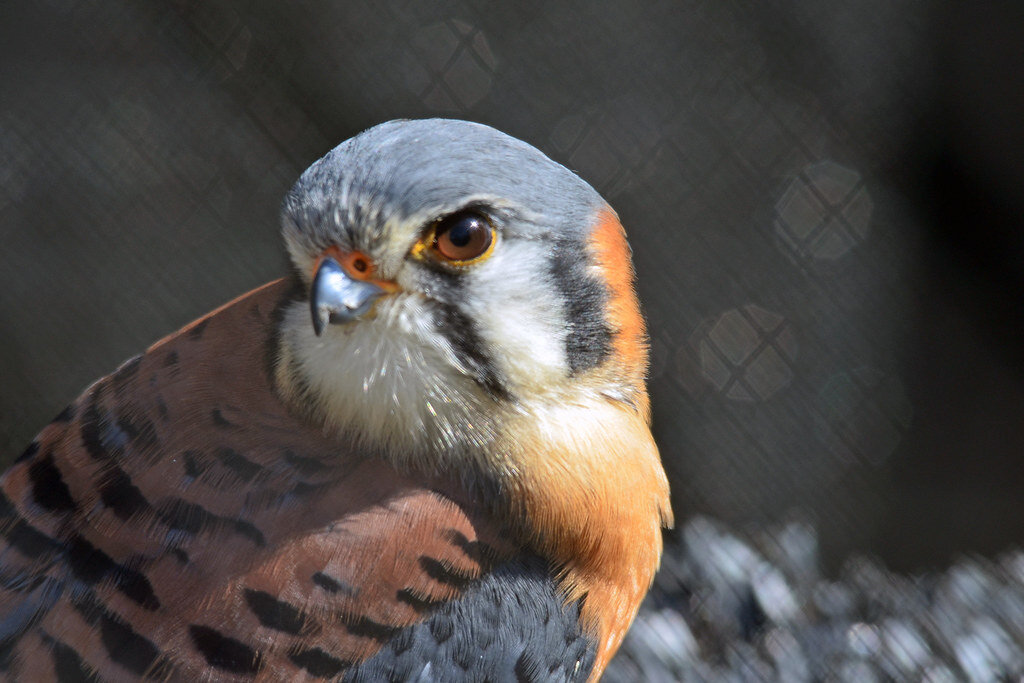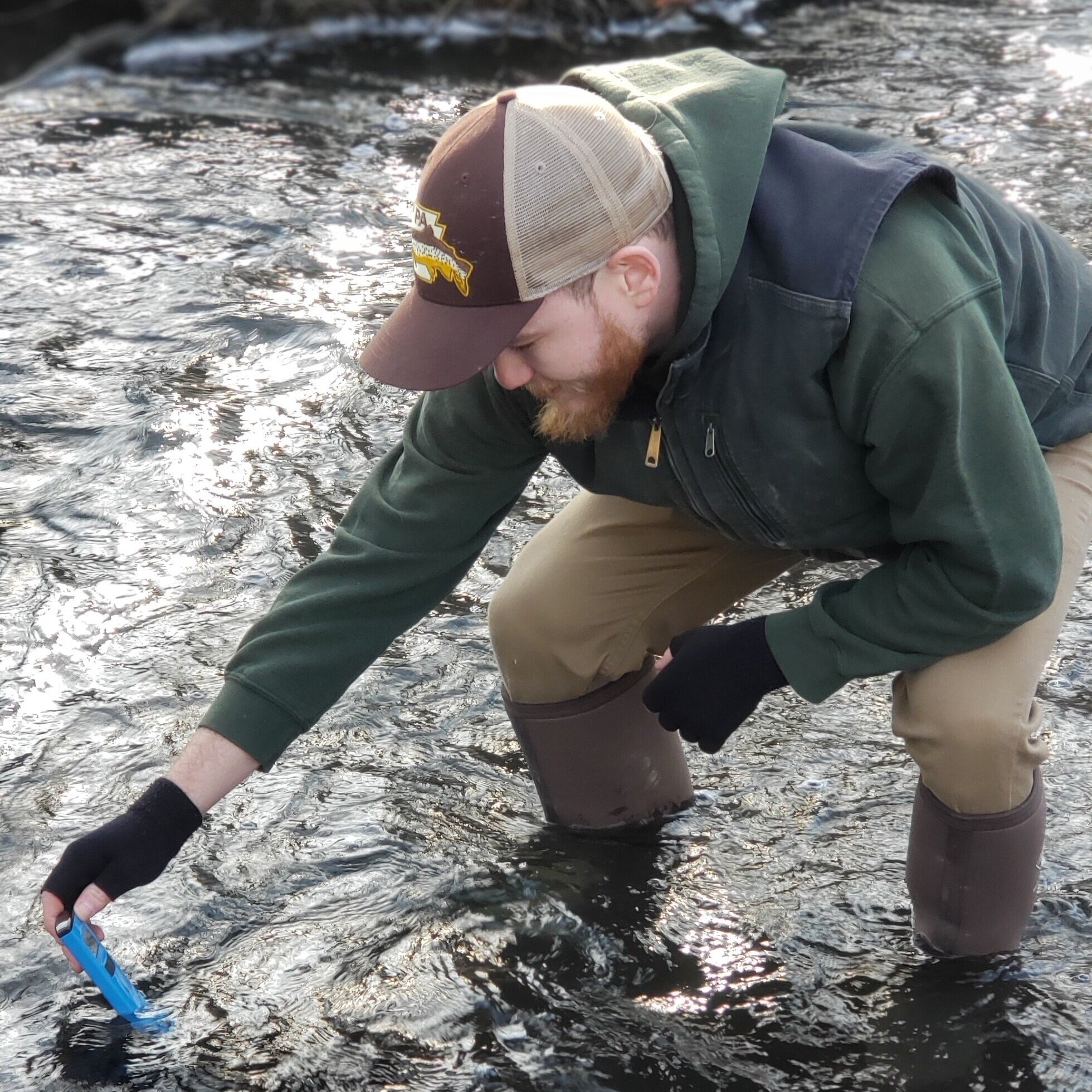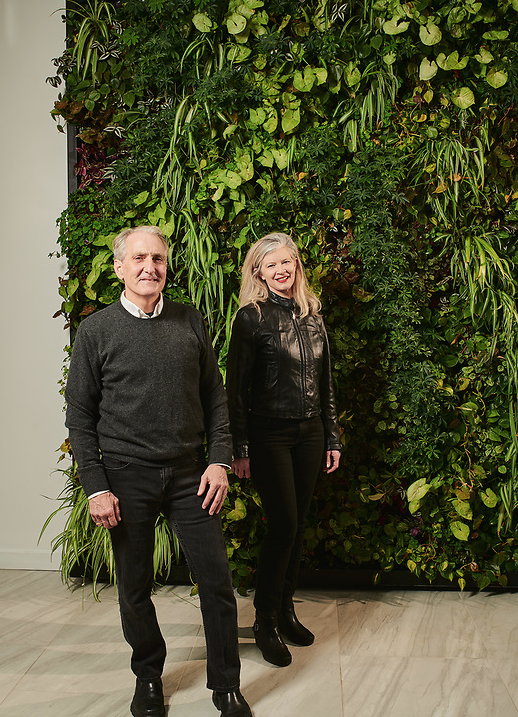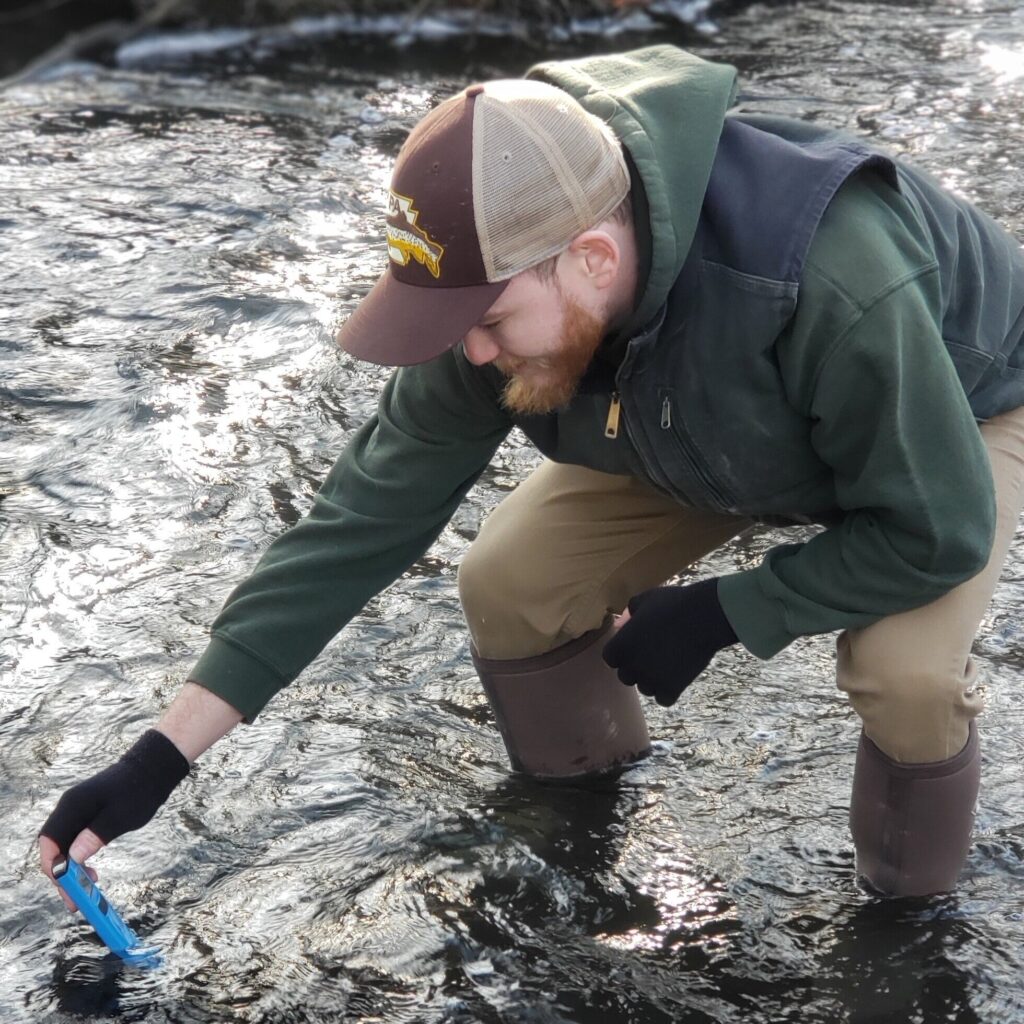I heard my new neighbors screaming before I saw them.
A high-pitched “kee, kee, kee, kee” at the end of my block stopped me in my tracks. It reminded me of the calls peregrine falcons make, but was a little higher in pitch and certainly out of place.
Peregrines like tall structures with good views of the surrounding landscape, and our block is all two- and three-story buildings. There was another falcon candidate, though: the American kestrel, a much smaller and more colorful bird best known for sitting on telephone lines in the country, watching the fields for mice and grasshoppers. I caught a glimpse of the bird, backlit so that I could only see its silhouette—blue jay-sized, pointy wings and a blunt head.
Like any obsessive naturalist, I began stalking the bird. I’d sprint out the front door with my binoculars whenever I heard it calling, often dragging my 7-year-old daughter Magnolia along with me. (She quickly got in the habit of authoritatively demanding the binoculars so she could confirm that I had, in fact, seen the kestrel.)

Each observational victory only generated another question to obsess over. We finally got a clean look at it: a male kestrel, with blue-gray wings, an orange back and bold black-and-white cheek bars. Then, I needed a picture, proof that would let me log the observation on iNaturalist. (We eventually got the shot on my phone, taken through my binoculars.)
But the question remained: What was it doing on our block?
Finally, I saw it slipping into and then out of a hole in the brick wall under the eaves of a small apartment block on the corner. Kestrels nest in holes in trees or buildings (they’re cavity nesters). Males will feed their female partners while the females sit on eggs, so it seemed our kestrel was supporting a family.
The other birds on the block offered some hints as to whether it was hunting. The mourning doves, the same size as the male kestrel, chased him away whenever he landed near them. The starlings watched him warily and cleared out whenever he got close, even from their favorite oak tree across the street from our house.
Then one day in April I saw the robins mobbing the kestrel in a tree of heaven down the block. He flew away carrying a lumpy item dangling two skinny legs.
“Birds eat birds?!” Magnolia exclaimed, the world a suddenly crueler place than it had been a few seconds earlier.
Over the weeks, as I scampered around our block and the neighboring one on the other side of the kestrel’s corner, I handed off the binoculars to neighbors, at least a few of whom were excited to learn that a falcon (albeit a very cute and small one) was trying to raise a family right alongside us.
As May heated up, the female, notably larger and less colorful, came out of the hole to meet her mate more and more often. She would call, take the latest slain sparrow, and duck back in. Soon, she was hunting, too—an indication that the eggs had hatched and the chicks needed the labor of two parents to feed the family. The female was able to take down bigger prey, adding starlings and robins to the menu.
While I didn’t ever see them make a kill, I saw enough attempts to get a feel for their strategy: surprise unwary songbirds by launching into a sprint down our street or the parallel alleyways. Sometimes the kestrels would burst into a cross street, leaving their prey a split second to scatter and seek cover.
The little raptor family had plenty to eat. Our resident urban songbirds start nesting in late winter and pump out multiple broods through the spring and summer, yielding plenty of clumsy fledglings.
In June, the kestrel babies finally emerged from the nest. I counted at least two as they huddled adorably just outside the nest hole. I then ran inside the house to celebrate with my less-excited—but kindly patient—family (and then with my neighbors, who obligingly accepted my binoculars to take a look).
Soon, I was spotting them in the trees, begging for food from their parents, who would fly off and return with a dead songbird to shut them up. As children do, as they grew more independent, they began to spend less time near the old nest hole. By September I saw them infrequently, and by October they’d moved away—I wondered, “Where to?”
Pick up a pair of binoculars and see what you can find in your own neighborhood. Our brush with the beautiful and savage lives of these little falcons was special for sure, but there is nothing special about our block. Our city is full of similar houses and apartment buildings with holes perfect for nesting. It is also full of songbirds just the right size to feed a growing kestrel family.
It could be just a rare coincidence that interesting birds nested 60 yards from a nature writer’s house, but I doubt it.









